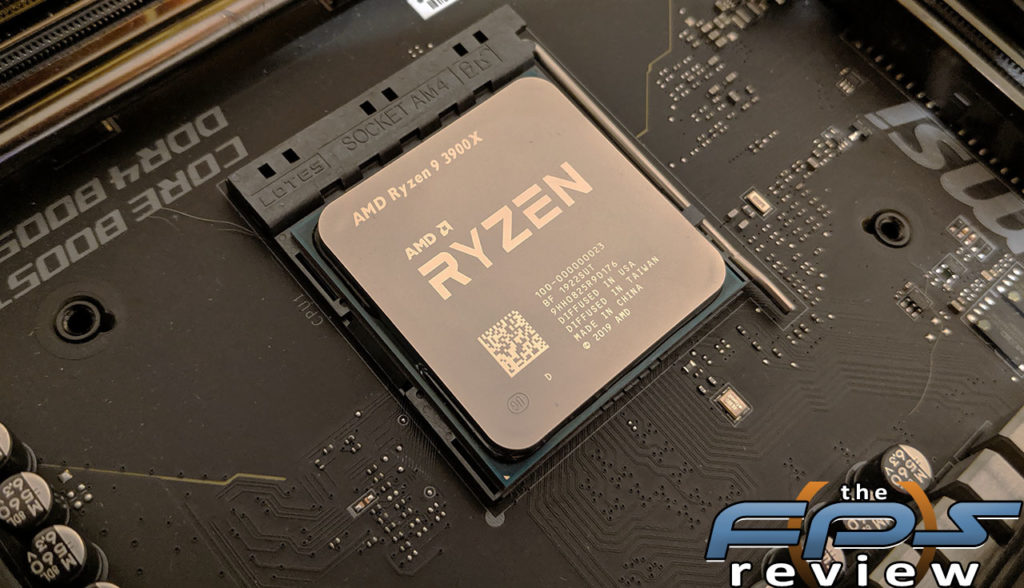Introduction
Today marks AMD’s official launch of its new Ryzen 5, 7 and 9 “3000 series” CPU’s. AMD hasn’t really kept many secrets about what Ryzen 3000 series parts are. About the only things that have remained secret are the general performance and overclocking capabilities of its new CPU’s. Even that, AMD hasn’t kept completely in the dark. As is often the case with such early statements concerning performance, its often a best-case scenario which is showcased to generate hype about the product.
AMD has made many bold claims about its 3rd generation offerings and in the past, AMD has often paid the price for over hyping its products. I’ll preface this article by saying that much of the hype is deserved, but that some of the statements AMD has made have been done through a certain lens. As usual, we’ll separate fact from fiction, reality vs. marketing and tell you just how these CPU’s fit in today’s landscape.
We will see how these new processors do against 2nd generation offerings as well as Intel’s mainstream gaming champion, the Core i9 9900K. AMD has made claims that these CPU’s are upwards of 21% faster than the previous generation and that Zen 2 has a 15% IPC improvement over its previous architecture. We will see if this is true or not.

Background Info
First, some background. AMD launched its Ryzen CPU’s in early 2017. Ryzen was well received, but not because it was dominant in terms of performance. Ryzen was successful because AMD launched a product that had twice the core and thread density of its rival, while still offering reasonably good instructions per clock cycle (IPC) performance. When Ryzen hit the market, Intel was still peddling quad cores just as it had done for roughly ten years prior in the mainstream. While it had offered higher densities in the HEDT market, such systems are prohibitively expensive for many people. I’ve personally been using Intel’s HEDT platform since X58, so I am all too familiar with its pricing. Since the launch of its Core 2 Duo, AMD has had a massive IPC deficit that it is only now able to deal with. AMD’s performance advantage in some applications was simply due to having double the core density of its rival.
When AMD’s Ryzen CPU’s hit the market, AMD had a performance advantage in multi-threaded workloads. This combined with good enough IPC for single threaded applications, along with attractive pricing is what enthusiasts responded to. However, it soon became apparent that Ryzen had a substantial weakness: Gaming. This is primarily at 1080P where the resolution is still largely CPU limited, although GPU’s do have a significant impact. Intel was considerably faster in gaming, and given most users are probably at 1080P, Ryzen was a little less attractive. People still went for it despite this weakness. However, it wasn’t just games where Ryzen sometimes suffered, it was still at an IPC deficit compared to Intel’s offerings and because of that, single threaded workloads weren’t exactly Ryzen’s strong suit. Many found AMD a viable option due to price and platform longevity. AMD promised socket compatibility through at least 2020. So far, all subsequent generations of Ryzen CPU have been a drop-in upgrade to the early X370 and B350 chipset motherboards.
Despite being a budget CPU maker for most of the last three decades, AMD has never wanted to play second fiddle to Intel. It’s done so primarily because it had no choice. When AMD dominated in most benchmarks with its Athlon 64, it charged as much if not more than Intel did. The stars have aligned as it were, and some circumstances have allowed AMD to catch Intel and compete with it on nearly equal footing. Not only has Intel struggled with its manufacturing process, but recently discovered security flaws required patches which mitigate both security holes and Intel’s performance advantages. Today marks AMD’s return to glory as it will no longer be considered a budget alternative to Intel, as it tries to lead the market rather than play catch up to Intel.
In order to do so, AMD had to address Ryzen’s weaknesses and improve performance in single-threaded applications. Not only that, AMD felt the need to push core density in the mainstream market ahead of Intel once again. This is in order to dominate in multi-threaded workloads. Achieving this required a multi-pronged effort. It required a die shrink, architectural improvements, driver work, firmware changes and of course some help from Microsoft.
